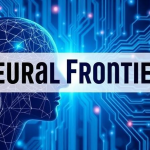For decades, developing a new drug has been a costly and time-consuming process, often taking over 10 years and billions of dollars. But today, the timeline is collapsing. Artificial intelligence—especially generative models and reinforcement learning—is transforming pharmaceutical research at a breakneck pace. We are witnessing the dawn of an era where AI doesn’t just assist in drug discovery—it actively drives it, designing new molecules, simulating their interactions, and optimizing them in silico before a single lab test is conducted.
Welcome to the world of AI-powered drug discovery, where algorithms explore chemical space faster than any human team ever could—and where personalized medicine may finally become a scalable reality.
The Traditional Bottleneck in Drug Discovery
Drug development historically follows a linear path:
- Target Identification: Finding a biological mechanism (usually a protein) involved in a disease.
- Lead Compound Search: Identifying chemical molecules that can interact with that target.
- Preclinical Testing: In-vitro and animal testing to evaluate safety and efficacy.
- Clinical Trials: Multi-phase trials on humans, which are extremely expensive and slow.
The vast majority of candidate compounds fail during these steps—either due to toxicity, poor efficacy, or bioavailability issues. Even promising drugs can be derailed late in the pipeline. This inefficiency is what AI aims to overhaul.
How Generative AI Transforms the Process
Generative AI models—especially those using techniques like generative adversarial networks (GANs) and variational autoencoders (VAEs)—can create novel molecular structures from scratch. These models are trained on massive datasets of known compounds and their properties, enabling them to “imagine” new chemicals with desirable characteristics.
Instead of screening millions of existing molecules, AI can generate completely new candidates tailored to a specific protein target.
Key advantages include:
- Speed: What once took months of trial-and-error can now be achieved in hours.
- Diversity: AI explores unconventional chemical structures beyond human intuition.
- Optimization: AI can tweak molecules for higher binding affinity, lower toxicity, and better bioavailability—simultaneously.
Reinforcement learning (RL) further enhances this process by providing feedback loops. The AI system generates molecules, simulates their effectiveness, and adjusts its generative strategy based on the results. It’s the same technique used in game-playing AIs like AlphaGo, now repurposed for chemistry.
Real-World Breakthroughs: AlphaFold and Insilico Medicine
1. DeepMind’s AlphaFold
One of the biggest recent breakthroughs in biology came from Google DeepMind’s AlphaFold, an AI that accurately predicts the 3D structures of proteins from their amino acid sequences.
Protein folding is crucial to understanding disease mechanisms and developing effective drugs. With AlphaFold, researchers can now access accurate models of previously uncharacterized proteins—cutting years off the drug discovery process.
Since AlphaFold released its database of 200+ million predicted protein structures, it has become a cornerstone resource for biochemists and pharmaceutical companies worldwide.
2. Insilico Medicine
This biotech company is a pioneer in generative AI for drug design. In 2021, Insilico announced the world’s first AI-discovered preclinical drug candidate for idiopathic pulmonary fibrosis. The AI platform generated the molecule, optimized it, and proposed a clinical development path—all in under 18 months, a fraction of the industry average.
Insilico’s platform also integrates multi-omics data, making it especially promising for tailoring drugs to specific genetic or molecular profiles—laying the groundwork for personalized treatment.
AI and Personalized Medicine: A Perfect Match
One of the most profound implications of AI in drug discovery is its potential to enable hyper-personalized treatment. Instead of a one-size-fits-all drug, AI can help develop medicines tailored to an individual’s:
- Genetic makeup (via whole genome sequencing)
- Microbiome profile
- Epigenetic markers
- Real-time biometrics (from wearable biosensors)
Imagine a future where, upon diagnosis, an AI analyzes your health data and designs a molecule optimized for your unique biology—delivered as a custom treatment within weeks.
This isn’t just theoretical. Projects like the UK’s Genomics England and the NIH’s All of Us initiative are building datasets to support exactly this kind of individualized care. AI is the engine that can translate that data into actionable treatments.
Cloud Labs and the Rise of Automated Biofoundries
AI doesn’t work in isolation. It is now deeply integrated into automated labs—also known as biofoundries—where AI-designed compounds are synthesized and tested using robotic platforms. These cloud labs close the loop between in silico design and in vitro testing, enabling rapid iteration.
Companies like Emerald Cloud Lab and Transcriptic (now part of Strateos) allow researchers to run experiments remotely, with AI managing everything from chemical reactions to data collection. This integration accelerates the drug development cycle dramatically—often reducing years of wet-lab work to mere weeks.
Ethical and Regulatory Considerations
With such disruptive speed, comes responsibility. There are crucial challenges that must be addressed:
- Transparency: How do we ensure the AI’s design rationale is understandable to regulators and clinicians?
- Bias in Training Data: If the models are trained on incomplete or biased data (e.g., underrepresentation of certain genetic populations), the resulting drugs may be less effective—or harmful—for those groups.
- Safety in Acceleration: Speed should not come at the cost of thorough testing. Regulators like the FDA are actively working on new frameworks to evaluate AI-assisted drug development.
Governments and institutions are beginning to craft guidelines around AI in biomedicine, but the pace of innovation often outstrips regulation.
What the Future Holds
Over the next five years, we can expect:
1. AI-First Pharma Companies
Startups built entirely around AI-driven pipelines will begin to outcompete legacy drug developers in speed and cost-efficiency.
2. Real-Time Drug Optimization
As clinical data streams in during trials, AI will dynamically refine drug formulations and dosing—creating adaptive therapies that evolve during treatment.
3. Disease-Agnostic Platforms
Instead of focusing on one disease, AI platforms will tackle multiple conditions by identifying shared molecular patterns—unlocking treatments for rare or orphan diseases.
4. AI-Guided Vaccines and Antivirals
Following the success of mRNA vaccines, AI will play a larger role in rapidly designing immune-targeted therapies, especially in response to pandemics.
Final Thoughts: The AI-Chemist Is Here to Stay
Artificial intelligence is no longer a supporting tool in pharmaceutical research—it is becoming the lead innovator. From molecule generation to protein folding, from cloud-based synthesis to personalized formulation, AI is reinventing how we treat disease.
We are entering a world where the discovery of new medicines is limited not by human trial-and-error, but by how quickly we can feed data into smart systems. A world where treatments are not just faster, but smarter—and made just for you.
The race toward instant pharmaceuticals has begun. And AI is not just running it—it’s redefining the track.






Leave a Reply